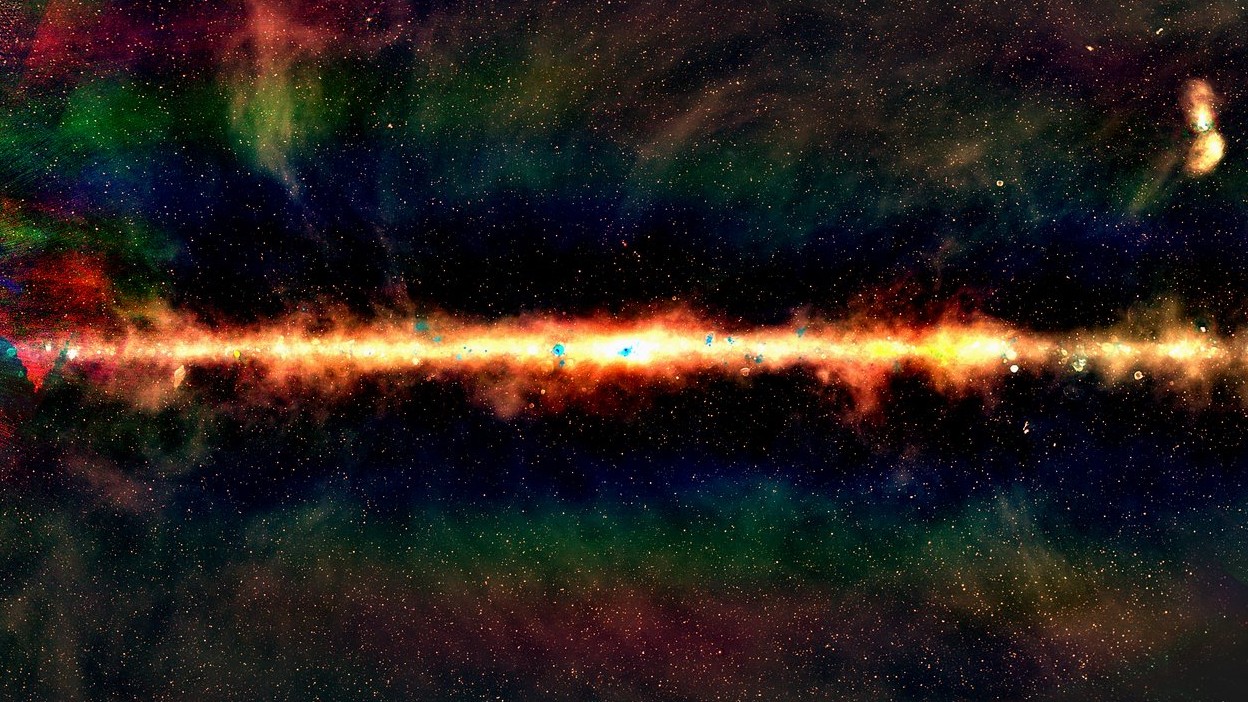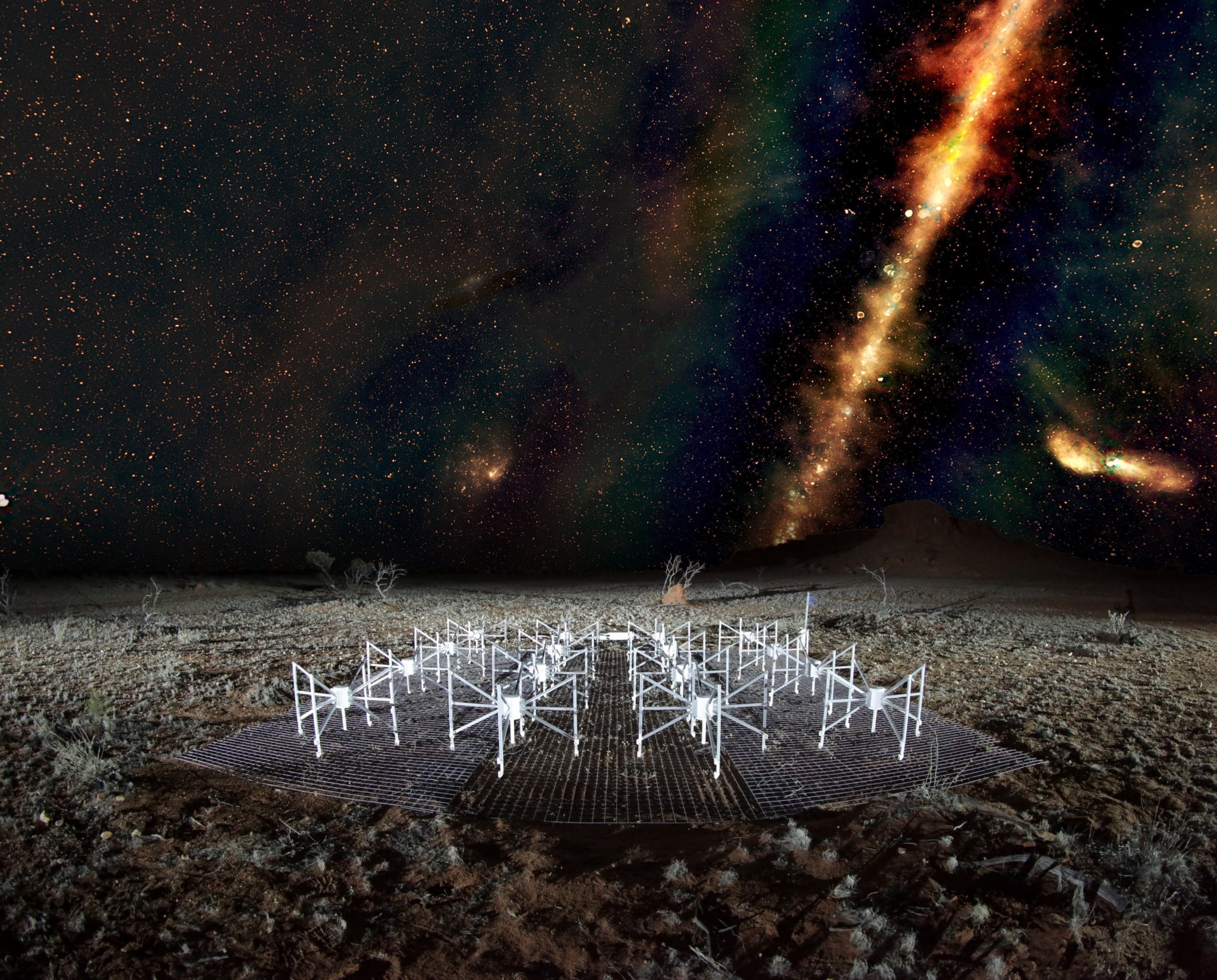This Is Our Amazing Technicolor Cosmos

We observe the universe in many different wavelengths of the electromagnetic spectrum (and now, the gravitational wave spectrum) to see different objects radiating at different energies. Seeing the universe in infrared light, for example, can help us see baby stars forming inside their dusty stellar nurseries, whereas X-ray observatories can pick out some of the most energetic phenomena like the flares produced by black holes consuming stars.
However, as these wavelengths are often beyond the visible spectrum (i.e. light that the human eye can see), astronomers will assign familiar colors to these otherwise invisible wavelengths to give them meaning.
And so, in a stunning portrait created by data from the Murchison Widefield Array (MWA) located in the West Australian outback, a beautiful technicolor display has been produced of our radio wave view of the cosmos.
RELATED: How to Use a Pulsar to Find Starbucks
"The human eye sees by comparing brightness in three different primary colors — red, green and blue," said Natasha Hurley-Walker, of Curtin University and the International Center for Radio Astronomy Research (ICRAR), in a Royal Astronomy Society statement. "GLEAM does rather better than that, viewing the sky in each of 20 primary colors. That's much better than we humans can manage, and it even beats the very best in the animal kingdom, the mantis shrimp, which can see 12 different primary colors."

The GaLactic and Extragalactic All-sky MWA — or 'GLEAM' survey — has cataloged 300,000 galaxies observed at frequencies between 70 and 230 MHz and, after assigning a color to the frequency range, a striking picture emerges.
Through the center of the image is the band of the Milky Way, our home galaxy. Beyond our galaxy's emissions are low frequency radio waves (shown in red) to the mid-range frequencies (green) to high frequency radio waves (blue). Some of these radio emissions have traveled for billions of light-years since the early epochs of our universe, whereas the emissions from our galaxy were produced on our cosmic doorstep, but all have a story to tell astronomers.
Get the Space.com Newsletter
Breaking space news, the latest updates on rocket launches, skywatching events and more!
"Our team are using this survey to find out what happens when clusters of galaxies collide," said Hurley-Walker. "We're also able to see the remnants of explosions from the most ancient stars in our galaxy, and find the first and last gasps of supermassive black holes."
RELATED: Monster Desert Telescope Construction Complete
The $50 million MWA is a forerunner to the planned Australian Square-Kilometer Array (SKA) called SKA-low that will focus on the lower end of the radio spectrum when it becomes operational and work in conjunction with a sister site in South Africa.
"It's a significant achievement for the MWA telescope and the team of researchers that have worked on the GLEAM survey," said MWA director Randall Wayth. "The survey gives us a glimpse of the Universe that SKA-low will be probing once it's built. By mapping the sky in this way we can help fine-tune the design for the SKA and prepare for even deeper observations into the distant Universe."
For now, as we wait for an even deeper look into our radio universe, this is what the universe would look like if we could "see" in radio waves — and it would be a cosmic rainbow.
Originally published on Discovery News.
Join our Space Forums to keep talking space on the latest missions, night sky and more! And if you have a news tip, correction or comment, let us know at: community@space.com.
Ian O'Neill is a media relations specialist at NASA's Jet Propulsion Laboratory (JPL) in Southern California. Prior to joining JPL, he served as editor for the Astronomical Society of the Pacific‘s Mercury magazine and Mercury Online and contributed articles to a number of other publications, including Space.com, Space.com, Live Science, HISTORY.com, Scientific American. Ian holds a Ph.D in solar physics and a master's degree in planetary and space physics.









